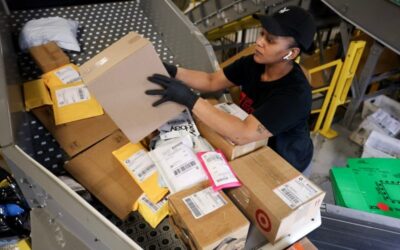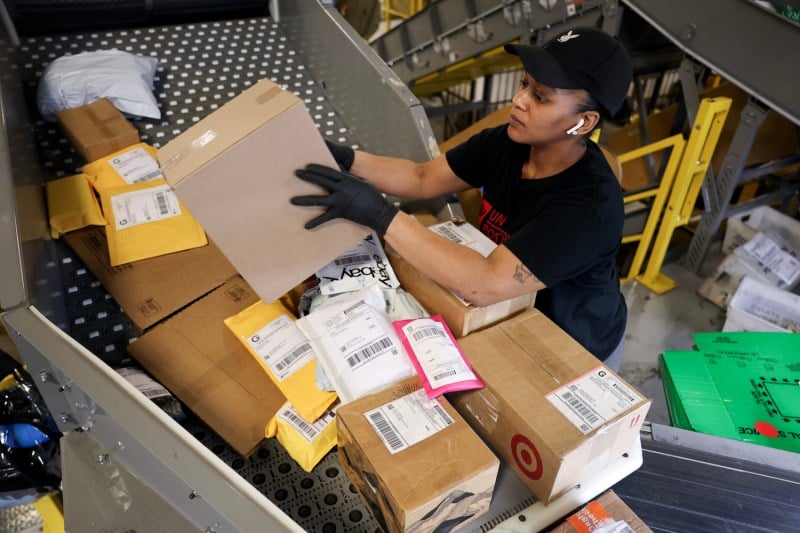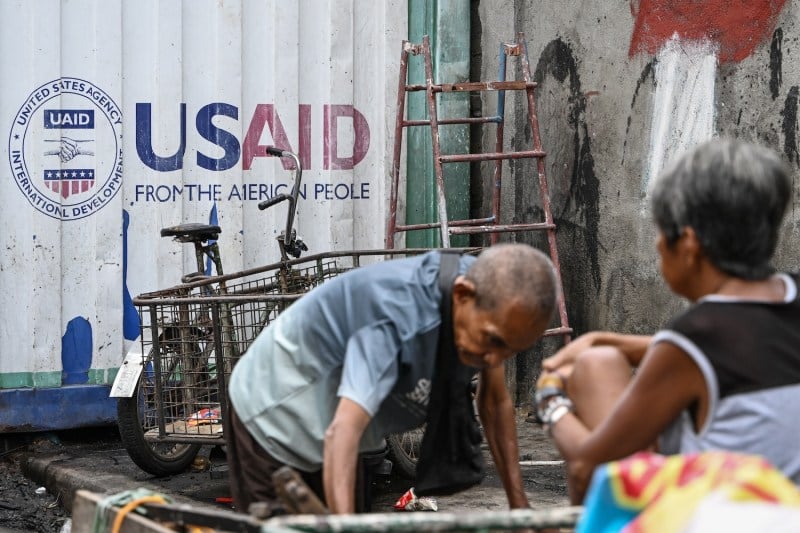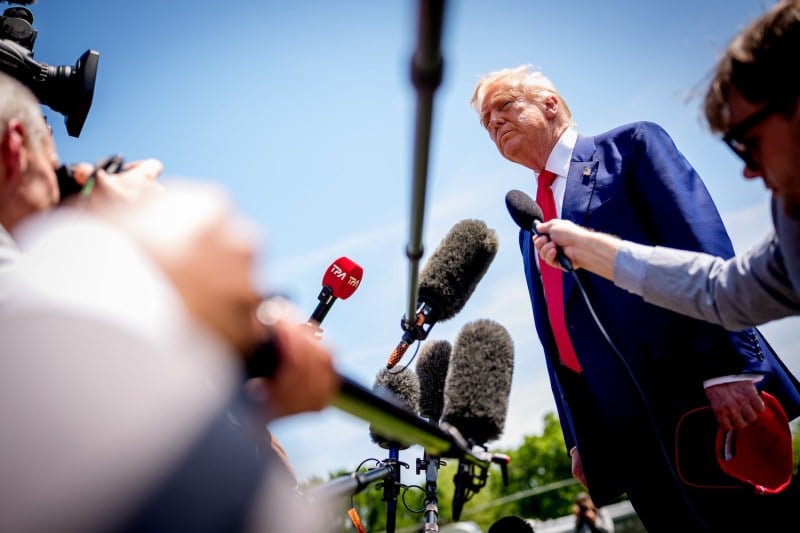How Ancient Rome Blew Up Its Own Business Empire

How Ancient Rome Blew Up Its Own Business Empire
Aristocrats disdained trade—but it helped build Roman power.
A depiction of ships in port during the Roman Empire.
J Williamson/Culture Club/Getty Images
The second Trump administration has embarked on a set of broadly anti-trade tariff policies that are threatening the foundations of Pax Americana, the post-World War II global order that ensured U.S. dominance, growing prosperity in much of the world, and relative global peace. If the United States-led order falls, it would not be the first such system whose decline could be partly attributed to short-sighted political decisions that reduced trade.
Roman aristocrats, like all ancient elites, almost universally disliked trade and held the merchants who made it possible in contempt. Trade was seen as a sordid, cheating sort of thing (the theory of comparative advantage that explained how a merchant produced value honestly would not be developed until 1776) whereby merchants could gain wealth outside of the proper ways of being born rich or capturing wealth in war. Worse yet, trade generated wealth outside of the direct control of the landholding elites who dominated politics in nearly every ancient society.
The second Trump administration has embarked on a set of broadly anti-trade tariff policies that are threatening the foundations of Pax Americana, the post-World War II global order that ensured U.S. dominance, growing prosperity in much of the world, and relative global peace. If the United States-led order falls, it would not be the first such system whose decline could be partly attributed to short-sighted political decisions that reduced trade.
Roman aristocrats, like all ancient elites, almost universally disliked trade and held the merchants who made it possible in contempt. Trade was seen as a sordid, cheating sort of thing (the theory of comparative advantage that explained how a merchant produced value honestly would not be developed until 1776) whereby merchants could gain wealth outside of the proper ways of being born rich or capturing wealth in war. Worse yet, trade generated wealth outside of the direct control of the landholding elites who dominated politics in nearly every ancient society.
Yet the Roman Empire benefited greatly from expanding Mediterranean trade between the third century B.C.E. to the third century C.E. Roman policy encouraged trade and the economic growth it created lined Roman coffers too, at least until the Romans themselves fragmented the pan-Mediterranean trade zone they had created, impoverishing their empire and leaving it less able to face the challenges that would eventually lead to its fragmentation and dissolution in the West.
The Romans had the good fortune to expand into a Mediterranean world already experiencing a substantial expansion of trade, particularly seaborne trade. Shipwrecks, often datable by the cargo they deposited on the Mediterranean sea floor, can provide a guide to the amount of overall sea trade, since the number of shipwrecks will correlate, at least roughly, with the number of ships plying the waves.
To judge by the rate at which dateable shipwrecks appear in the archaeological record, by 500 B.C.E., Mediterranean shipping was already around 10 times what it had been in the ninth century B.C.E. and equally roughly 10 times what it would be in the ninth century C.E.
However, the expansion of the Roman Republic coincides with an enormous burst of trade activity: Dateable shipwrecks leap from between 20 and 40 per half-century between 500 and 200 B.C.E. to well over a hundred between 150 B.C.E. and 100 A.D. That boom in seaborne trade is reflected not only in shipwrecks but also in land-based evidence for trade, like ceramic containers which can be traced to distant points of origin, and persists well into the imperial period.
Moreover, we know that not only were there more ships plying the trade lanes, they were often much larger. The constant background hum of Mediterranean trade in the pre-modern period were small sailing traders engaged in short range “cabotage” trading, often with deadweight tonnages around 30 tons.
But the Hellenistic and subsequent Roman periods also show evidence for much larger freighters in use on the seas. Ships with estimated cargoes well above 100 deadweight tons become reasonably frequent in the Roman period, including one absolutely massive 550 ton freighter—the ultra-large container vessel of its day. Indeed, such large freighters were sufficiently common that port regulations, such as those for Thasos, confined smaller ships to the outer harbor, with the main harbor facilities reserved for larger freighters.
The great boom in trade the Romans enjoyed was not entirely serendipity: While sea trade had been growing prior to Rome’s expansion to encompass the whole of the Mediterranean—a process that advanced in stages from the third to the first centuries B.C.E.—Roman rule notably accelerated that growth. While Roman aristocrats in the Senate often looked down their noses at the sorts of people engaging in trade (while also secretly acting as silent partners in such ventures), Roman rule was, by ancient standards, remarkably pro-trade, compared to the highly fragmented and violent Mediterranean of previous centuries.
The Romans standardized the currency in the Mediterranean, creating a system that was far easier for merchants to utilize in any port they might visit. At the same time, the Romans established a single tariff and customs regime throughout the Empire, lowering trade barriers and most importantly creating a highly predictable trade environment. The expansion of Roman rule also made the seas safe: While early Roman efforts to suppress piracy brought at best mixed results, the eventual expansion of Roman rule to cover the entire Mediterranean littoral denied pirates any safe base free from Roman retaliation. After Pompey’s suppression of the Cilician pirates and conversion of Cilicia into a Roman province, the risk from piracy in the Mediterranean appears to have markedly declined, further opening the seas to trade.
Trade created economic activity, which could be taxed. This was particularly important for pre-modern states like the Roman Empire that lacked the bureaucratic and administrative apparatus to employ more efficient and less distortionary kinds of taxes, like VAT or income taxes. But Rome benefited the most not from the direct revenues it created, but the indirect advantages of trade. The emergence of a robust and predictable system of long-distance trade in bulk staples enabled regional specialization in production to a degree not seen before. Ancient farmers typically diversified their crops and communities produced a little bit of everything; this was safer in an environment where markets were unpredictable and unreliable, but it also meant accepting that a substantial amount of labor and land were committed to the production of crops and goods not well suited to local conditions.
But as markets and long-distance trade became more robust, regions of the Roman world could specialize, albeit to a degree that would strike the modern viewer as quite modest (even if it was unprecedented at the time), counting on the market to deliver the goods they did not produce in exchange for the goods they did.
Modern archaeological work has uncovered numerous examples of such specialized regional production centers, despite how little evidence survives for economic activity two millennia ago. Olive oil from the province of Baetica in southern Spain, for instance, was shipped in bulk as far as Britain to supply Roman armies. Italian villas might specialize in wine production for sale in distant markets in Gaul, while settlements like Leptiminus appear to have specialized in olive oil for export. Settlements specialized in the production of consumer goods, like large-scale production of terra sigillata pottery for export at La Graufesenque in what is today Aveyron, France.
The result was a significant and noticeable uptick in prosperity across the Roman world alongside sustained population growth: Conservative estimates suggest a 25% increase in GDP per capita over this period and population growth from roughly 45 million to over 60 million. That in turn also meant more resources available to the Roman state to fund its public works, benefits, and defense.
Archaeological evidence also allows us to observe the end of this trade-induced economic boom. At first glance, there is a quandary in the evidence: Dateable shipwrecks drop off sharply beginning in the second century, but the distribution of land-based evidence for trade, such as finding trade goods at sites far from their points of manufacture, suggests no decline this early. Instead, what we seem to be observing is the transition from ceramic amphorae to barrels as the container of choice for liquids. Barrels were easier to stack and transport and less likely to break in transit, but whereas amphorae can survive thousands of years underwater to be discovered, barrels, along with the wooden ships that carry them, rot to nothing. When the sample of shipwrecks are limited to those carrying non-perishable cargo like stone, the underwater evidence conforms to the land-based evidence, with trade sharply lower in the fourth century than it was in the third, collapsing to almost nothing by the fifth century.
Any such economic transition stems from complex causes, but the most immediate cause for the decline in Roman trade was simply that the political conditions that had enabled the Roman trade boom in the first place ceased. Beginning in 235, the Romans entered a period known as the Crisis of the Third Century: Five decades of renewed civil war shattered the unity of the empire and thus the unity and safety of its markets. Rival emperors, locked in brutal military competition, debased the currency to pay their soldiers and buy loyalty, leading the once reliable Roman currency system to become shaky at best.
Worse yet, when the crisis came to an end, the policies the newly triumphant emperors Diocletian and later Constantine pursued hardly favored economic freedom or the renewal of markets. When Diocletian’s fumbling efforts to stabilize the Roman currency system produced runaway inflation, he responded with the traditional expedient of attempting to fix prices, issuing an edict on maximum prices, the text of which is partially preserved today.
Like most such state interventions in the economy, the edict failed to stabilize prices. Meanwhile, Diocletian also revised the tax system, creating a bureaucratic, centralized, and cumbersome taxes that relied on a five-year census that was never regularly performed, leading to tax assessments that bore little resemblance to the economic activity they were taxing. In an effort to stabilize this system, Constantine, rather than creating a more agile tax system, created a less agile economy, forbidding tenant farmers to leave their lands in a forerunner of what would become European serfdom.
The result was that while the Roman economy stabilized, it did so as a less productive economy, more exposed to the decisions and caprice of emperors and one that provided, as a result, fewer resources for the Romans to defend their empire.
It was a poor time for Rome to be without its economic might, as intensifying security threats on both the Rhine-Danube frontier and with the Sassanid Empire in the East demanded greater spending on Rome’s armies. The resulting heavy taxation likely depressed the Roman economy further, one element out of many in the downward spiral that led to the eventual fragmentation and dissolution of the Empire in the West in the fifth century.
It is no new thing for political authorities to assume that “trade is bad,” and to inaccurately view trade deficits as a form of theft. Yet societies that act on that elite disdain risk destroying the very thing that enabled their prosperity and strength in the first place.
Bret Devereaux is a historian specializing in the Roman economy and military.
More from Foreign Policy
-

A drawn illustration of a Trump whirlwind on a red background Four Explanatory Models for Trump’s Chaos
It’s clear that the second Trump administration is aiming for change—not inertia—in U.S. foreign policy.
-

Marco Rubio is seen up close, sitting on a couch beside J.D. Vance. Marco Rubio’s Soulless Crusade
The U.S. secretary of state stands for no principle other than serving the man who appointed him.
-

Soldiers from various NATO allies take part in a military exercise at the Smardan Training Area in Smardan, Romania, on Feb. 19. America Will Miss Europe’s Dependence When It’s Gone
European self-reliance for security will cost U.S. jobs, profits, and influence.
-

A collage photo illustration shows Donald Trump gesturing with arms wide. In front of him are headshots of Benjamin Netanyahu and Vlodymyr Zelensky, images of immigratns and ICE police, a tattered EU flag and America First signs. Trump’s First 100 Days on the Global Stage
Ten thinkers on what to make of the opening salvo of the president’s second term.








Join the Conversation
Commenting on this and other recent articles is just one benefit of a Foreign Policy subscription.
Already a subscriber?
.
Subscribe
Subscribe
View Comments
Join the Conversation
Join the conversation on this and other recent Foreign Policy articles when you subscribe now.
Subscribe
Subscribe
Not your account?
View Comments
Join the Conversation
Please follow our comment guidelines, stay on topic, and be civil, courteous, and respectful of others’ beliefs.
Change your username |
Log out
Change your username:
CANCEL
Confirm your username to get started.
The default username below has been generated using the first name and last initial on your FP subscriber account. Usernames may be updated at any time and must not contain inappropriate or offensive language.